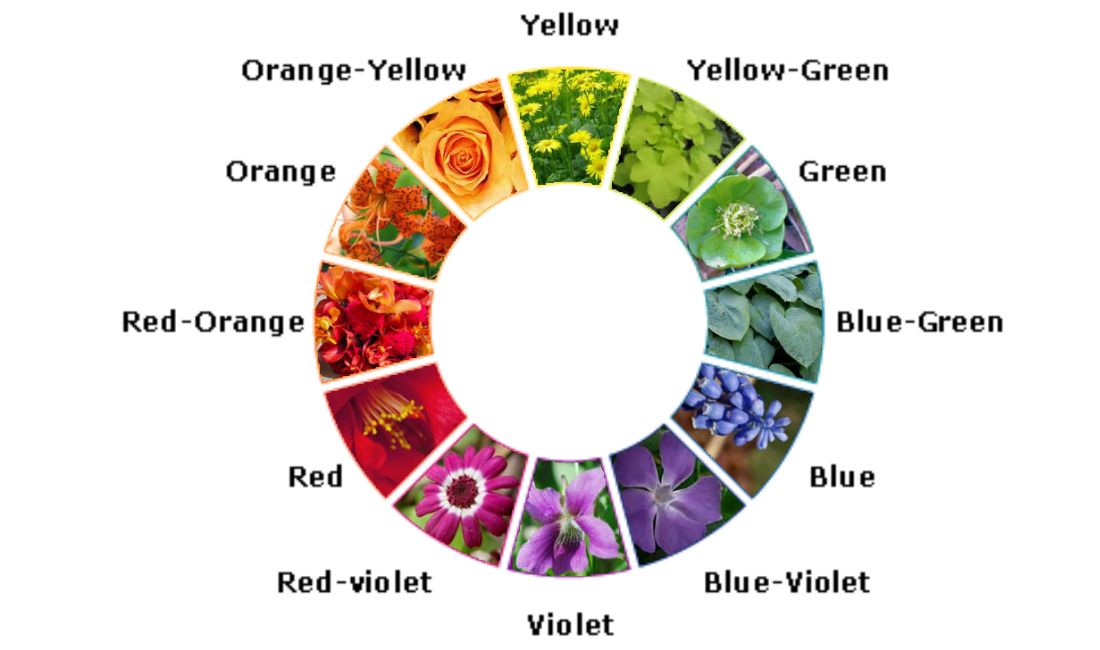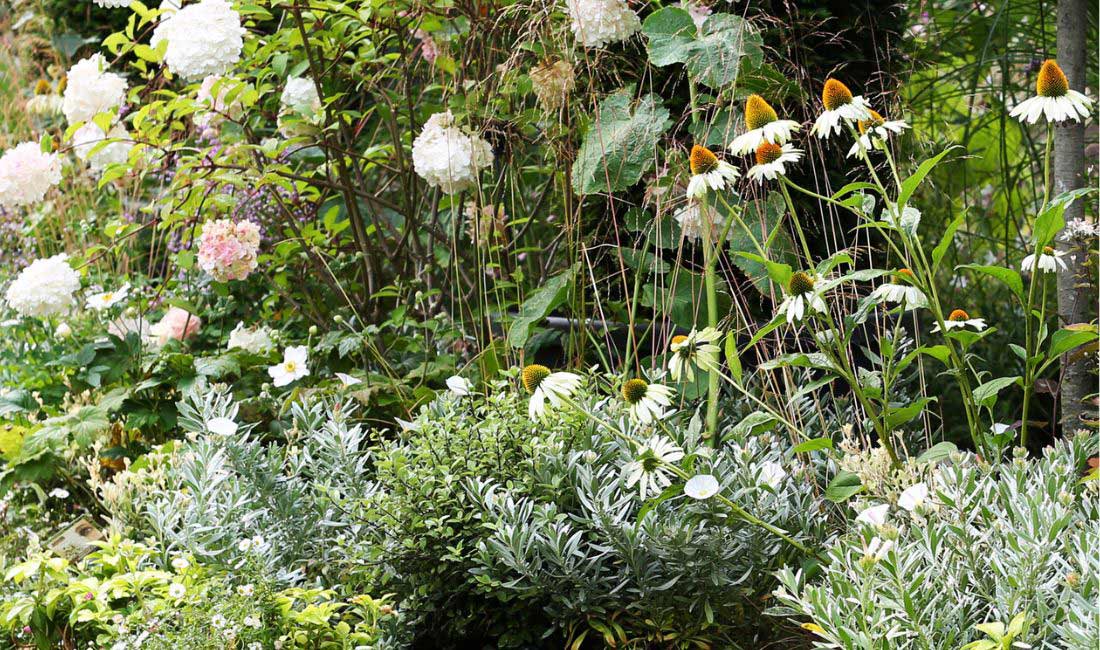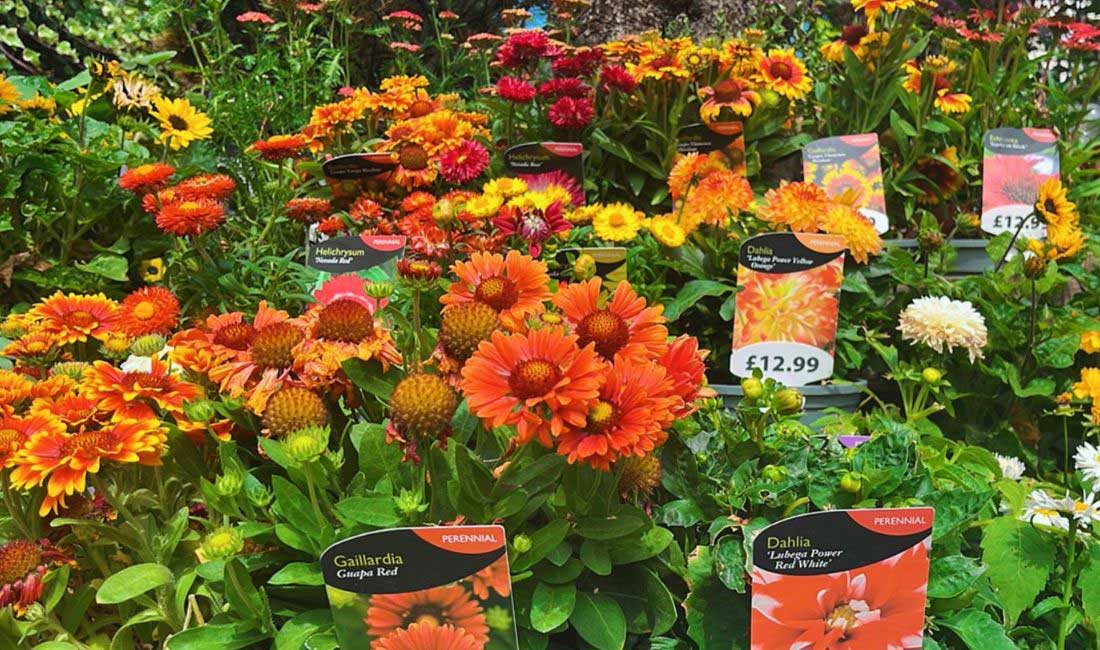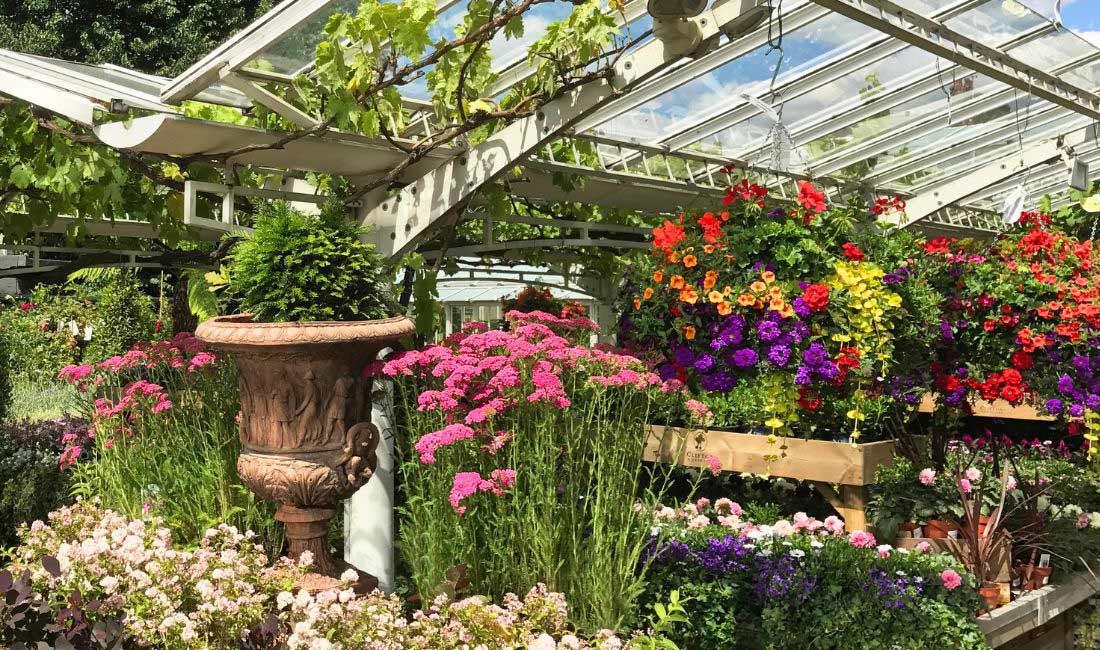
Colour is often the first thing we notice when we look at something.
We all respond to colour in subconscious ways as colour can influence moods and emotions, affect our behaviour, and even impact physiological reactions. For example, yellow is often linked to happiness and creativity, while red is often linked to excitement and strength.
Understanding colour and how to use it in the garden is made easier by referring to a simple colour wheel. A colour wheel is based on three primary colours: red, yellow and blue, with a rainbow of colours in between.
Using the colour wheel to select colours that harmonise or complement enables you to change the feel of your garden. You can create moods for different areas – perhaps calming, soft colours for a quiet spot, and vibrant, hot colours to give a lift and boost to other areas of the garden. Although green is usually the predominant colour in gardens, it’s what you mix it with that matters. And don’t forget to include your favourite colour for that ultimate feel-good factor!
Although we often think of flowers for colour in the garden, there are also many other ways of introducing colour. Some plants have coloured foliage - and containers, furniture, accessories, and structures come in a wide range of colours (or can be painted in a wide range of colours).
Cool Harmonious Colours
Cool harmonious colours are colours that sit next to each other on the colour wheel in the cooler spectrum, including greens, blues, purples and whites.
Use cool harmonious colours to create a calm and serene atmosphere with a soothing effect. Cool colours are particularly effective in partially shady areas, where they can create a sense of tranquillity. Be aware when positioning your plants that bright sunlight can wash out some cool colours.

Warm Harmonious Colours
Warm harmonious colours are colours that sit next to each on the colour wheel in the warmer spectrum, including reds, oranges and yellows.
Use warm harmonious colours to create an inviting and energetic atmosphere with visually pleasing combinations. Brighter colours are also ideal for attracting pollinators as well as keeping us cheerful!

Complementary Colours
Complementary colours are those that sit opposite each on the colour wheel, for example yellow and purple. When used together, these colours play off each other to create visual tension and contrast - and create a more dynamic effect with a punchier feel than harmonious shades. Ideal for uplifting your mood and creating drama and impact.

Anything Goes
Although the colour wheel is a good starting point for using colour in the garden, remember that there are no hard and fast rules. If you want to mix lots of different colours, why not? If you want to include lots of your favourite colour, just go ahead. Have some fun trying out new ideas for colour combinations – with the beauty of nature, it really can be a case of anything goes!

Clifton Nurseries Garden Centre
London, W9 2PH
Bank Holidays open until 7pm
0207 432 1867
Monday – Saturday 9am-5:30pm, Sunday 10.30am-4.30pm
Clifton Nurseries Garden Services
London, W9 2PX
